
Infinix is known for budget phones. Aided by some attractive offerings, the company is doing quite well in South Asian markets like Bangladesh and Pakistan with its Smart and Note lineup. The Infinix Note 7 that we reviewed a while back was surprisingly good and they’ve tried to replicate the success with the introduction of the Zero series. Infinix Zero 8 that I have with me here shares a lot of similarities with the Zero 8i that was launched in India—with the only difference being the camera sensors. But with cut-throat competition in the market from brands like Redmi and Realme, can Infinix find any success with these devices? Let’s discover in this review of the Infinix Zero 8.
Infinix Zero 8 Specifications:
- Body: 6.64 x 3.00 x 0.36 inches, 205 gm
- Display: 6.85-inches TFT IPS LCD, Gorilla Glass 3, 90Hz refresh rate
- Resolution: FHD+ (2460 x 1080 pixels), 20:9 aspect ratio
- Chipset: MediaTek Helio G90T (12nm Mobile Platform)
- CPU: Octa-core (2×2.05 GHz Cortex-A76 & 6×2.0 GHz Cortex-A55)
- GPU: Mali-G76 MC4
- Memory: 8GB RAM, 128GB storage (expandable)
- Software & UI: XOS on top of Android 10
- Rear Camera: Quad-camera;
– 64MP primary lens with f/1.9 aperture & PDAF
– 8MP ultra-wide-angle lens with f/2.3 aperture
– 2MP depth sensor with f/2.4 aperture
– 2MP macro sensor with f/2.4 aperture
– Quad-LED flash - Front Camera: Dual-camera;
– 48MP primary lens with f/2.2 aperture
– 8MP ultra-wide-angle lens with f/2.2 aperture - Security: Physical fingerprint sensor (side-mounted)
- Audio: 3.5mm headphone jack, loudspeaker
- Connectivity: Dual-SIM (Nano), WiFi 802.11 a/b/g/n/ac, Bluetooth 5.0, GPS / AGPS, USB Type-C, 4G LTE
- Sensors: Accelerometer, Gyro, Proximity, Compass
- Battery: 4500mAh with 33W fast charging
- Color options: Silver Diamond, Black Diamond, Green Diamond
- Price in Nepal: N/A (Not launched yet)
Infinix Zero 8 Review:
Design & Build
- Glass front, plastic back, plastic frame
- A big phone with uneven weight distribution
As with most other Infinix phones that we’ve seen in the past, the company has gone big on the design of the Zero 8. Just look at it—it’s so… radical. Featuring a two-tone geometrical pattern, this gem-cut aesthetics will most certainly turn a few heads. The silver-diamond color variant here looks pretty swell but the phone is also available in green and black options. Its big diamond-shaped camera bump also stands out among other devices, while also contributing to a significant level of wobble when placing on a flat surface.
Moreover, the bottom half of the rear panel also reflects different colors depending on how you look at it. But because of its glossy finish, it does attract fingerprints—which fortunately isn’t visible as much in this Silver color option. Despite all the bold design choices, being a budget phone, it is made from plastic (including the frames).
Big and bulky
It is a rather big phone so folks with small hands may find it a challenge to get around with. To put it into context, the Infinix Zero 8 is even bigger than Samsung’s Galaxy Note 20 Ultra, despite featuring a slightly smaller display. Weighing 205 grams, it’s definitely not the most lightweight of phones but that wasn’t much of a bother during my usage—although I’m confident not everyone’s gonna feel the same with this phone. The weight distribution feels slightly uneven with the lower half of the phone feeling considerably heavier.
Moving on, the right frame of the phone houses the fingerprint sensor which doubles as a power button as well. Just next to it lies the volume rockers. These are placed well within the reach of my hands so I didn’t have a problem here. While the top frame stays clean, you’ll find the SIM tray on the right side of the phone. Finally, there’s a 3.5mm headphone jack, a USB-C port, and the bottom-firing speaker grille on the bottom. Above everything else, the Infinix Zero 8 features a bold design and if you’re ok with a big phone, it will fare you nicely.
Display
- 6.85-inches IPS LCD screen, FHD+
- 90/180Hz refresh/touch sampling rate
- Corning Gorilla Glass 3 protection
Getting to the display, this phone boasts a massive 6.85-inches TFT IPS panel. While we’d complained about HD+ resolution on the ginormous 6.95-inches screen on the Infinix Note 7, it seems like the company has learned its lesson and thus has included FHD+ resolution this time around. But that’s not all, to appeal to the budget mobile gaming community, the Zero 8 also has a 90Hz refresh rate.
![Infinix Zero 8 - Display [2]](https://cdn.gadgetbytenepal.com/wp-content/uploads/2021/02/Infinix-Zero-8-Display-2.jpg)
Additionally, this screen is also protected by Corning’s Gorilla Glass 3. Yet, I would highly advise putting on a decent screen protector as well for better protection. You can see the pill-shaped cutout for the dual cameras on the top left corner of the screen. I would’ve liked to see Infinix implement a sleeker cutout, but here we are. Despite the company opting for a cutout mechanism for the front cameras, the significant bottom chin is something of a disappointment. You’re clearly trying to appeal to the gaming community, so why not elevate the charm by offering a front-firing speaker setup?
Smooth criminal
Anyway, thanks to the smoother 90Hz refresh rate and 180Hz touch sampling rate, from regular usage to gaming, everything feels pretty smooth. But that’s about the only redeeming quality of this big screen. Comparing it against the Redmi Note 9 Pro Max, the inferiority of this panel becomes crystal clear—and remember, I’m not even getting into the AMOLED horizon. Everything—from color accuracy, contrast, vibrancy, to sharpness is worse on the Infinix Zero 8. So if you thought you’d be enjoying content consumption on this phone, prepare for a let-down.
Besides, there isn’t even an option to adjust the color temperature of the display. Watching videos on streaming services like Netflix, Amazon Prime Video is a pretty bland experience too since the phone is restricted to Widevine L3 certification only.
Performance
- Octa-core MediaTek Helio G90T SoC (12nm)
- 8GB RAM with 128GB internal storage (expandable)
Jumping to the performance, Infinix Zero 8 is powered by the beloved MediaTek Helio G90T. Based on the 12nm process, this SoC made the rounds because of its exceptional gaming performance for the price. The memory side of things is pretty standard as the phone comes in a single 8/128GB option.
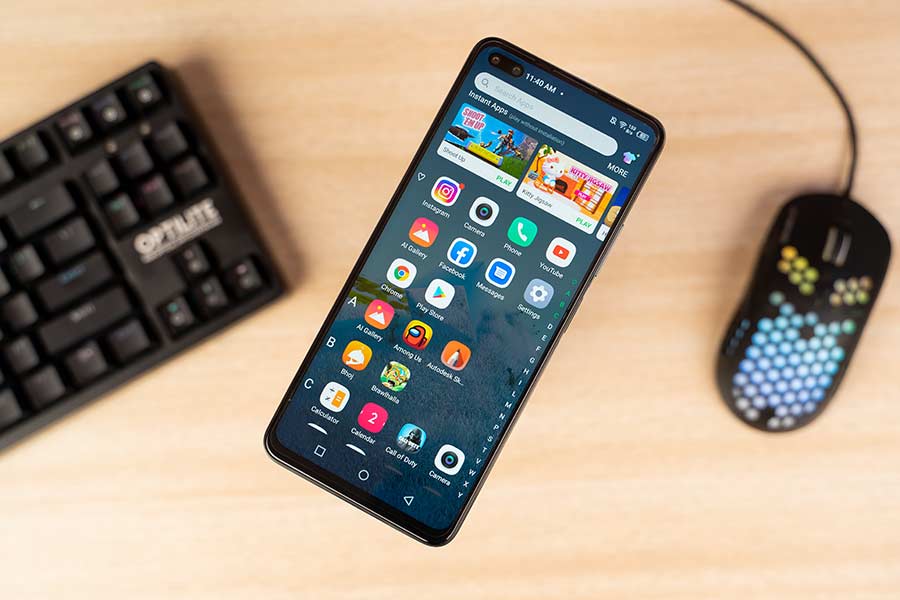
And without a doubt, one of the best things about this phone is the performance. As you’d expect, there’s not much of a lag on regular usage including light to medium multitasking. When the 90Hz refresh rate kicks in, scrolling the UI or the web gets pretty smooth. The Android skin of Infinix, called XOS isn’t that well designed but the smooth experience somewhat makes up for the fact. You can also switch the screen refresh rate to 60Hz or select the automatic mode where the system switches between the two levels depending on the content on the screen.
While the performance is pretty respectable, XOS is pretty terrible. The phone comes with a bunch of bloatware apps pre-installed—most of them from the Infinix ecosystem. For instance: XTheme, XClub, XShare, etc. You can disable but can’t uninstall them. And yeah, these apps do send loads of ads and notifications. But after uninstalling or disabling the unnecessary bloatware, the UI doesn’t feel as hectic. More often than not, you’ll receive app notifications/ads on the system with occasional Google ads as well.
Gaming experience
When it comes to gaming, I tried titles like PUBG and Call of Duty Mobile for this review of the Infinix Zero 8 and both games ran pretty smoothly. By swiping from the left edge, you can access the game optimization screen and access various featuring like blocking incoming calls, taking a screenshot, etc. One neat feature is that it lets you use the phone’s volume buttons as extra controls for different games.

Likewise, I also tried games like Genshin Impact and PES. Playing these titles under 60fps, I didn’t notice any frame stutter on the Redmi Note 9 Pro Max but I did notice a few instances of such on the Infinix Zero 8.
The classic Qualcomm vs MediaTek debate comes into play here. Throughout my gaming sessions, I found that the Helio G90T isn’t as optimized as the Snapdragon 720G—and these two silicons are on par with each other. We know that Helio G90T is not as energy-efficient so obviously, Zero 8 manages to get hot quite quickly. It does have liquid cooling technology which is supposed to counter this exact problem. Even with this, the phone takes rather long to cool down but it isn’t something of a deal-breaker.
Camera
- Quad-camera setup at the back
- (64MP primary, 8MP ultrawide, 2MP depth, 2MP macro)
- Dual-cameras on the front (48MP primary, 8MP wide)
Now let’s get into the cameras. Infinix Zero 8 comes with a quad-camera setup at the back led by a 64MP Sony IMX686 primary image sensor. Alongside this are the 8MP wide-angle, a 2MP depth sensor, and a 2MP macro camera. Similarly, the front of the house has a 48MP primary and an 8MP wide-angle camera inside the cutout. To judge the camera capabilities of Infinix Zero 8 for this review, I compared it against the Redmi Note 9 Pro Max.
Primary Images
First, let’s talk about the photos from the primary sensor of the two phones.
As you can see, the images from Infinix Zero 8 look soft with low details, and the colors are quite desaturated too.
Wideangle, Portrait Images
Similarly, the wide-angle shots come out soft and grainy on the Zero 8 too.
On the other hand, portrait images look a-bit sharper than regular photos. But, these too look desaturated for some reason.
Plus, it doesn’t do justice to edge detection too.
Nighttime Images
Moving on to the night-time images, there’s not much of a difference here either.
The images are lacking in detail, whereas the Note 9 Pro Max can shoot sharper low-light photos with better exposure.
Selfie, Portrait Selfie Images
Upfront, selfies from the 48MP sensor have nice sharpness but aren’t HDR-optimized. And the edge-detection isn’t that good either.
One interesting thing is that you can also turn on the selfie camera by swiping down the camera cutout on the lock screen. Plus, the animation looks pretty cool as well.
Videography
When it comes to videos, the Infinix Zero 8 can shoot up to 4k/30fps footage. But as expected, it lacks any sort of stabilization. Same goes for 1080p/60fps videos. However, you can record slightly stable videos when switching the resolution to 1080p/30fps or 720p/30fps.
Here, the recordings look flat and don’t feature punchy colors although the stabilization seems acceptable. Infinix Zero 8 also lets you shoot videos with bokeh effect at 720p/30fps. While that’s a pretty good feature for a budget phone, the quality of such recordings will now blow you away.
Security
- Side-mounted fingerprint sensor
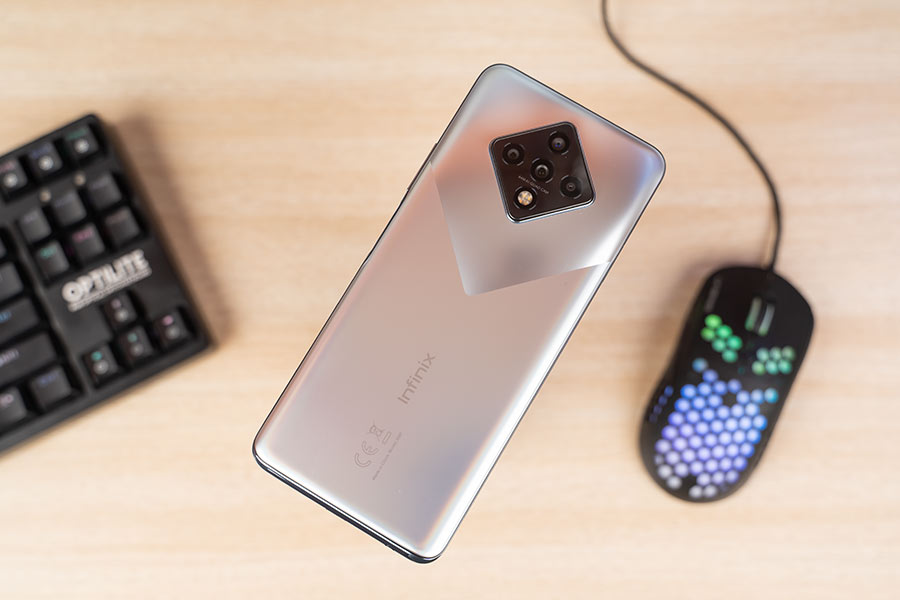
On the security front, as I mentioned earlier, this phone has a side-mounted fingerprint sensor which also doubles as a power button. It is well-placed and scans your fingerprint pretty quickly too. On top of this, you can also choose the Face Unlock option. But as we know, it just isn’t as secure as other biometric options available. Plus, like most other phones with face unlock, its performance takes a hit when you’re in a dimly-lit ambiance.
Moreover, Infinix isn’t known for its exceptional software support either. It’s already January 2021 and our unit is stuck on October’s security patch—let alone the anticipated Android 11 update. Having said that, similarly priced phones from other manufacturers aren’t that diligent when it comes to software updates either so… Infinix kinda gets a pass, I guess?
Battery
- 4500mAh battery with 33W fast charging
On the battery front, the company has packed in a decent 4500mAh cell on Zero 8. The capacity itself is on par with other phones in this range but I found its endurance to be less-than-impressive. With the 90Hz refresh rate option turned on, I only managed to net out about 4.5 hours of screen-on-time.
![Infinix Zero 8 - Display [1]](https://cdn.gadgetbytenepal.com/wp-content/uploads/2021/02/Infinix-Zero-8-Display-1.jpg)
To squeeze out more battery life, I tried turning on the Power Boost feature inside the Power Marathon menu, and indeed got a couple of extra hours of SoT. Charging up the phone is quick though. It supports 33W fast charging and thankfully, Infinix ships the 33W fast charger inside the box. With this, it takes about 1 hour and 5 – 10 minutes to get from nil to 100%.
Audio
- Single bottom-firing speaker
The audio setup on the Infinix Zero 8 is nothing to write home about either. It has a single bottom-firing speaker setup and the audio is not that great. It sounds flat and there isn’t enough details/richness in the sound to at-all enjoy it. The pre-installed DTS Sound app does let you play around with the equalizer or different sound profiles. As a result, the phone’s audio quality is somewhat improved by messing around with this app.
Conclusion
To sum it all up, Infinix Zero 8 is the company’s first attempt at a gaming-focused mid-range phone. Trying to make a name for oneself in an already crowded industry is no easy job and Infinix deserves some credit here for putting out a well-designed and well-performing phone in this market. It is a good first attempt but ultimately, Zero 8 is haunted by the company’s inherent flaws in other departments like camera and software. Featuring the latest Sony IMX686 sensor, I expected a little more from this phone, but the unoptimized software eventually ruins the day.
Similarly, in a bid to keep the price of the phone to the minimum, you also get ads on the phone and I’ve already talked about the unpolished UI/UX. As a result of all of this, even though the Infinix Zero 8 brings a bold design to the mid-range smartphone market, in the end, that’s simply not enough to keep up with the competition. Maybe the company should now focus on the said aspects to turn things around in the future.
- Watch our video review of the Infinix Zero 8.
Infinix Zero 8 Review: Pros & Cons
Pros:
- A big, bold, and radical design
- Smooth 90Hz refresh rate
- Decent gaming experience
- Good enough battery life
- 33W fast charger inside the box
Cons:
- Might be too bulky to use for many
- Terrible colors, contrast, saturation
- Infinix’s custom Android skin in horrific
- Cameras aren’t on par with competition
- Audio quality isn’t at all impressive












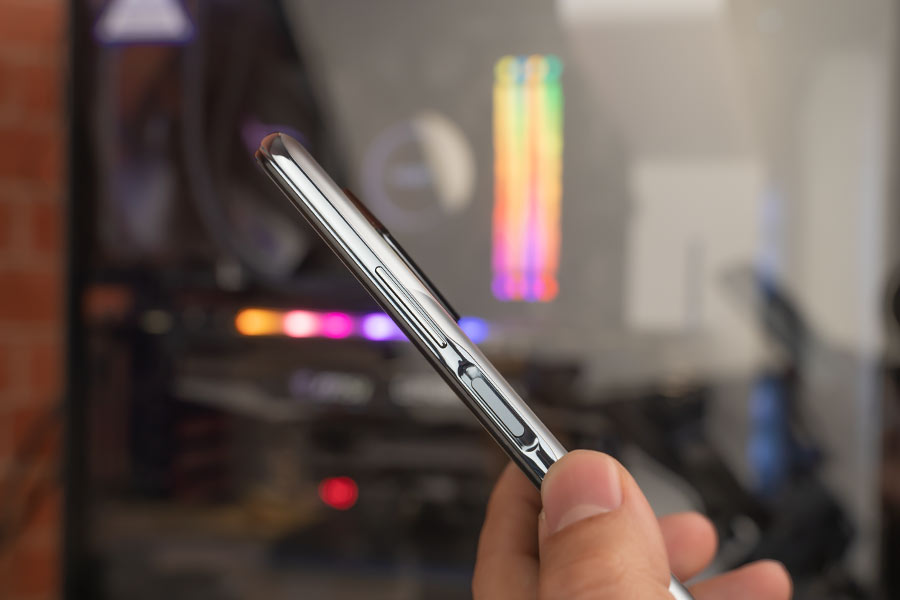
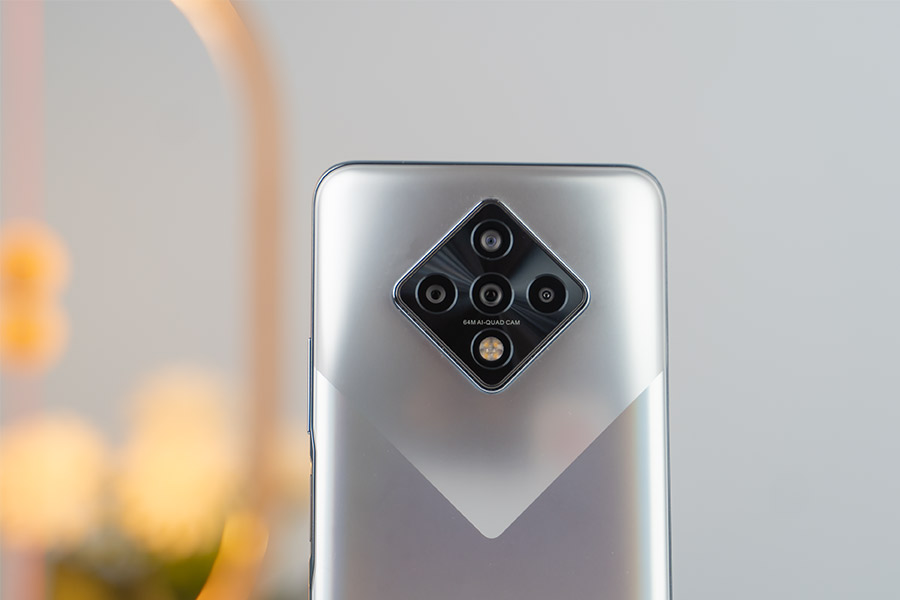







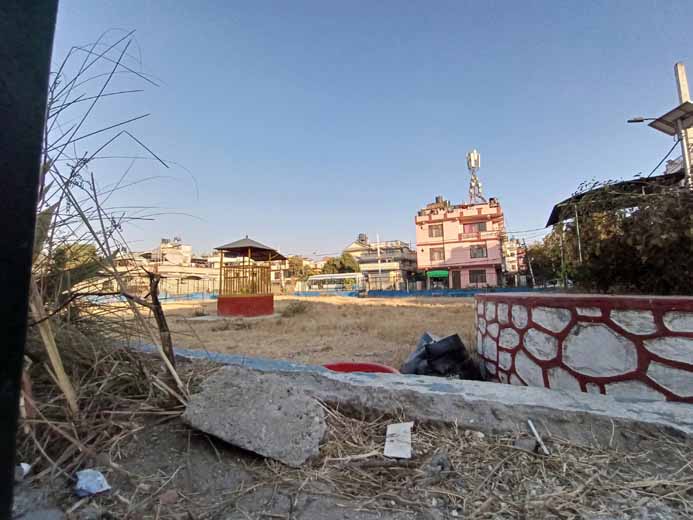






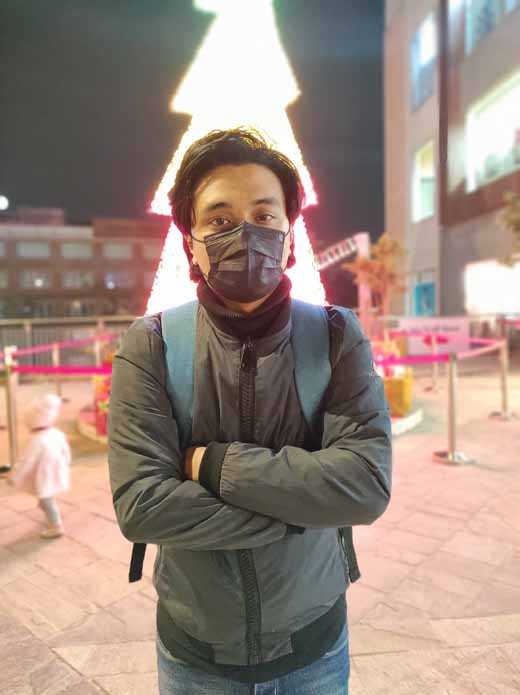




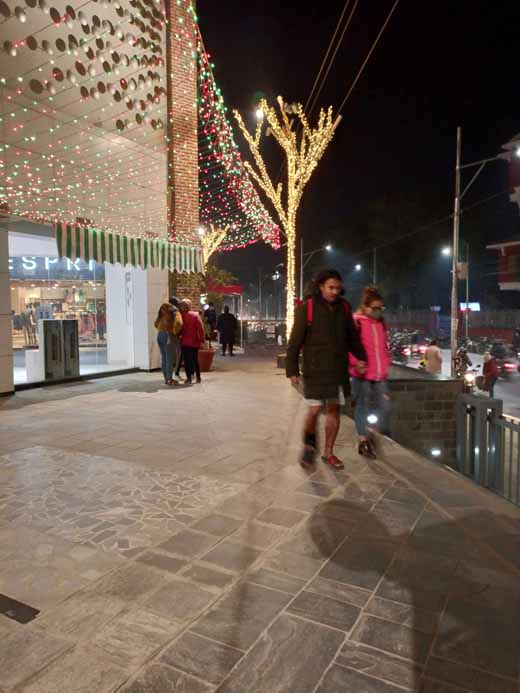



















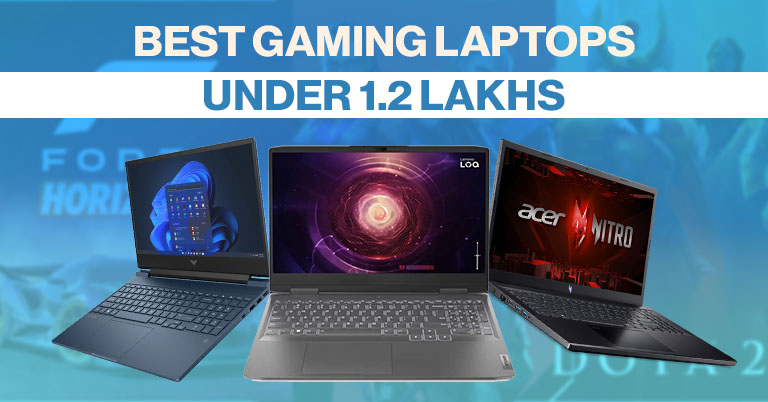
![Best Mobile Phones Under Rs. 15,000 in Nepal [Updated] Best Phones Under 15000 in Nepal 2024 Budget Smartphones Cheap Affordable](https://cdn.gadgetbytenepal.com/wp-content/uploads/2024/03/Best-Phones-Under-15000-in-Nepal-2024.jpg)
![Best Mobile Phones Under Rs. 20,000 in Nepal [Updated] Best Mobile Phones Under NPR 20000 in Nepal 2023 Updated Samsung Xiaomi Redmi POCO Realme Narzo Benco](https://cdn.gadgetbytenepal.com/wp-content/uploads/2024/01/Best-Phones-Under-20000-in-Nepal-2024.jpg)
![Best Mobile Phones Under Rs. 30,000 in Nepal [Updated]](https://cdn.gadgetbytenepal.com/wp-content/uploads/2023/12/Best-Phones-Under-30000-in-Nepal-2024.jpg)
![Best Mobile Phones Under Rs. 40,000 in Nepal [Updated] Best Phones Under 40000 in Nepal 2024 Smartphones Mobile Midrange](https://cdn.gadgetbytenepal.com/wp-content/uploads/2024/02/Best-Phones-Under-40000-in-Nepal-2024.jpg)
![Best Mobile Phones Under Rs. 50,000 in Nepal [Updated] Best Phones Under 50000 in Nepal 2024 Smartphones Midrange](https://cdn.gadgetbytenepal.com/wp-content/uploads/2024/02/Best-Phones-Under-50000-in-Nepal-2024.jpg)
![Best Flagship Smartphones To Buy In Nepal [Updated] Best Smartphones in Nepal 2024 Flagship Premium Samsung Apple iPhone Xiaomi OnePlus Honor](https://cdn.gadgetbytenepal.com/wp-content/uploads/2023/09/Best-Smartphones-in-Nepal-2024.jpg)